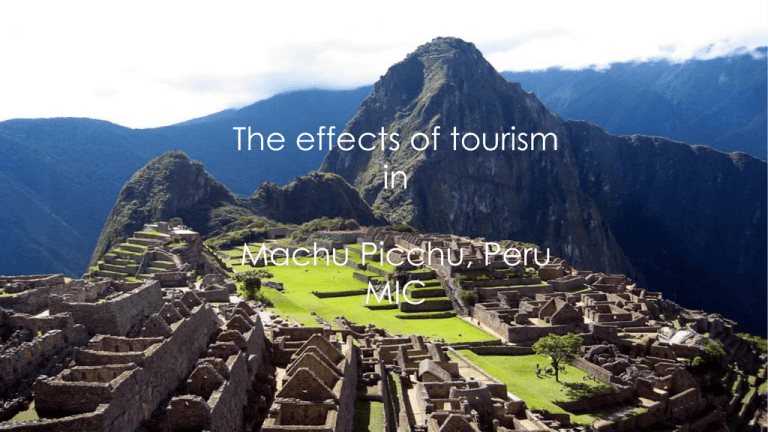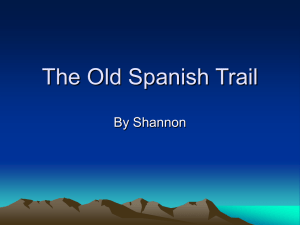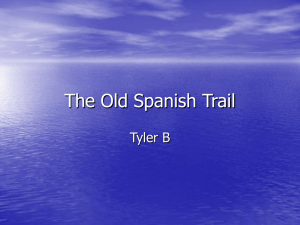Machu Picchu Paige and Eleanor
advertisement

The effects of tourism in Machu Picchu, Peru MIC The porters are paid $10 each day for a full day trip. Hand craft market has developed just for tourists. Positive Generates $40 million are year in income for the Peruvian government. Tourists spend money in the area, which has a positive impact on the incomes of local residents. A trip of $12 is given to each member of the tour party and shared the porters. This is considerably more than hotel workers are paid Economic impacts The hotels such as Sanctuary lodge at the entrance to Machu Picchu and the train line to the site are owned and run by the Orient-express hotel group, based in Bermuda. Therefore, a lot of the profit made from tourism leaves the country because the hotels are not owned by Peruvians. Negative The best jobs and, therefore, the high paying jobs are done by foreigners not local people, who are brought in to work by the foreign hotel company. Year Trekkers on the Inca Trail 1992 5,000 1994 14,500 1996 30,500 1998 53,500 2000 82,000 The rubbish bins along the trail are picked up by park wordens and simply dumped, usually in an No plastic bottles are allowed on the trail, since 2000, only canteens. The numbers of people on the trail are being limited to 500 a day to reduce the rate of erosion. Garbage is thrown into rivers such as Urubamba, or left close to the trail. This includes human excreta. Positive The tourists pay $50 each to travel the Inca Trail, which contributes to the upkeep of the area. Machu Picchu has been designated a world heritage site to protect it from large numbers of tourists. Environmental impacts Negative Tourists pick orchids which grow among the ruins and along the side of the trail. Erosion is beginning to occur on the Inca Trail due to pressure of 500 tourists a day. In 1998, 53,500 tourist walked the trail.











